Lea Wait's Blog, page 2
November 18, 2025
Those Magic Moments
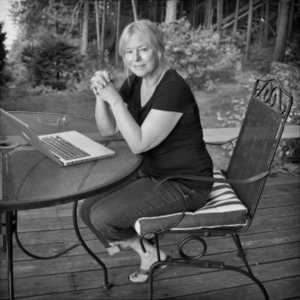 Kate Flora: When I was a book-loving little girl and imagined what the author’s life must be like, it was full of fabulous events with swooning readers and booksellers and libraries thrilled to be in an author’s presence. It was a fantasy, of course. The reality, which began for me in 1994, was far different. Doing my own PR. Driving for hours to an event only to learn that publisher had failed to send the books or given them away prior to my arrival. Once, driving through a growing snowstorm to Camden only to have the bookseller say, as soon as I arrived, “I’m sorry about that review. I had a chance to stop it but of course I didn’t.” Nothing like learning your newest book has been trashed by a reviewer in the local paper—and that the bookseller was proud of herself for not saying anything.
Kate Flora: When I was a book-loving little girl and imagined what the author’s life must be like, it was full of fabulous events with swooning readers and booksellers and libraries thrilled to be in an author’s presence. It was a fantasy, of course. The reality, which began for me in 1994, was far different. Doing my own PR. Driving for hours to an event only to learn that publisher had failed to send the books or given them away prior to my arrival. Once, driving through a growing snowstorm to Camden only to have the bookseller say, as soon as I arrived, “I’m sorry about that review. I had a chance to stop it but of course I didn’t.” Nothing like learning your newest book has been trashed by a reviewer in the local paper—and that the bookseller was proud of herself for not saying anything.
But that rather harsh and daunting reality has been punctuated along the way with magical moments. Among the best? The night I got to interview Tony Hillerman on stage while he was touring his memoir. I was a huge Hillerman fan…always had been, and it had been made greater by meeting him just before my first book came out, having a private chat, and getting his advice. But this night was truly special. A pair of armchairs, a little coffee table to display his books, and a conversation. At the end, when I was asking him questions the audience had submitted on index cards, I wasn’t even daunted when one of the questions was: What is the name of the woman who is interviewing Mr. Hillerman? I had forgotten to introduce myself and I really didn’t care.
An amazing and illuminating encounter was at the Writer’s Police Academy. I was on a ride along. It was a very quiet night and we were in a rural part of the city. At one point, I asked the officer I was riding with why he had stopped and questioned a lone man walking down the road. He pulled over, told me about another such night when the man he’d stopped to speak with had nearly killed him. Then he showed the dashcam video of the entire event and shared how his supervisor had reacted, how his pregnant wife had, and how the department had supported him after the event. It was one of those special opportunities to get behind the “us vs. them” curtain and understand the huge emotional impact such an event has on everyone involved. Along the way, there have been several times when the officers I was speaking with shared intensely personal information that has made me a better writer of crime fiction.
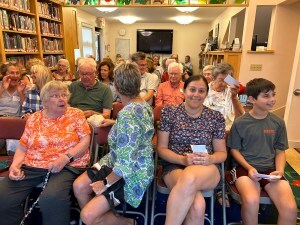
Full house on Vinalhaven
Another great event was last summer when three of us, myself, Jule Selbo, and Maureen Milliken, were invited to do a “Making a Mystery” presentation at the Vinalhaven Library. They gave us ferry tickets, put us up in a lovely house, treated us to a cocktail party, and provided a full house for our presentation. Later, there was dinner in the fridge, and wine, and we could sit for hours and talk about writing. It was absolutely perfect!!
And then there was this. Back in 2017, I had a story in a collection from Three Rooms Press called The Obama Inheritance. I got an email from the publisher that the book was going to be reviewed by Maureen Corrigan on Fresh Air. This is what she said, and my story, Michelle in Hot Water, was singled out for attention. I stood in my kitchen and listened and it felt like a thousand pats on the back.
 Maureen Corrigan: A truly fabulous story kicks off this collection. Remember all those loud whispers, sparked by a fist bump, that Michelle Obama was a covert black power separatist? In “Michelle in Hot Water,” crime writer Kate Flora takes that conspiracy fantasy about the first lady and runs with it. Here’s how the story opens:
Maureen Corrigan: A truly fabulous story kicks off this collection. Remember all those loud whispers, sparked by a fist bump, that Michelle Obama was a covert black power separatist? In “Michelle in Hot Water,” crime writer Kate Flora takes that conspiracy fantasy about the first lady and runs with it. Here’s how the story opens:
The big man with the Russian accent wore an expression somewhere between a smirk and a smile. Not a pleasant smile, but the smile of someone who likes to inflict pain and was about to do just that . … Michelle wasn’t afraid of him; bullies had been common in the part of Chicago where she grew up. Her years in the White House had shown her plenty more, even if they did hide behind expensive suits and artificial courtesies. No. … What scared her was the predicament she had gotten herself into and the trouble it was going to cause for her team: Faiza from State, Leela from the Surgeon General’s office, Charisa from the Pentagon, Lourdes from the FDA, and Alice from Justice.
Michelle, dressed in full combat gear and a Mission Impossible-worthy disguise of fake skin, has gotten caught by that Russian enforcer in the middle of a vigilante mission. It seems as though she and her team of high-level government gal pals have banded together — under cover of being in a women’s book group — to pressure pharmaceutical kingpins to lower the cost of cancer fighting drugs for kids.
When, as always, the drug makers initially refuse, first lady Michelle and her sister Amazons devise ways to inject these fat cats with a drug that temporarily renders them impotent, incontinent and bald. Part of the fun of this story is the repartee that Flora conjures up between Michelle and Barack. Like FDR, Barack realizes that his wayward activist wife can’t be reined in.
November 16, 2025
Did You Ever Wish You Owned A Horse?
Kaitlyn Dunnett/Kathy Lynn Emerson here, thinking about horses. I have no idea why, but when I was contemplating possible blog topics the other day, this one popped into my head. First let me say that, no, I never wanted to own a horse. I did, however, for several years in my early teens, very much enjoy going on trail rides run by a family in nearby town. I usually went with friends, most often with my gal pals, Leslie and Lisa. Unfortunately, I don’t have a photo of the three of us. This one shows me with another good friend, Cheryl, and my next-door neighbor, Billy. We were up on the hill where the trail ride made a regular stop. The other tradition was a full gallop for the last stretch back to the barn.
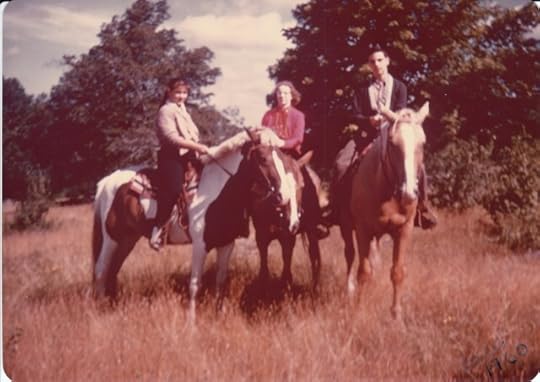
My favorite mount for the trail rides was Shadow. Don’t tell the current Shadow. Cats like to feel they have exclusive rights to their names.
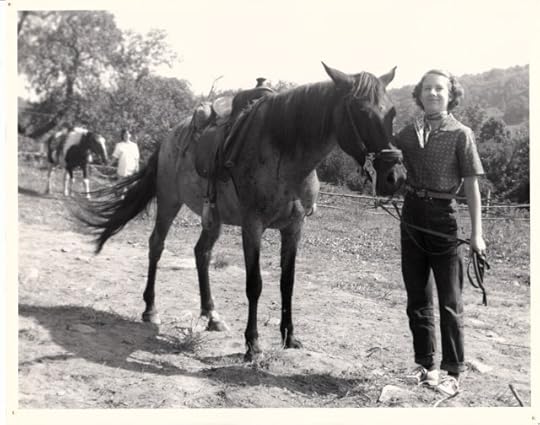
I vaguely remember reading a few “horse books” like Black Beauty but I was much more into girls’ mystery series and biographies of famous women like Clara Barton, Elizabeth I, and Nellie Bly. I think I had a couple of ceramic horse figurines, but I have no idea what happened to them.
Once I found other teenage interests, the horses were pretty much forgotten . . . with two exceptions. When I attended a Novelists Inc. conference in Santa Fe and the resort we stayed at offered trail rides, of course I had to sign up. It was a great way to see the scenery, but a lot harder on creaky old bones.
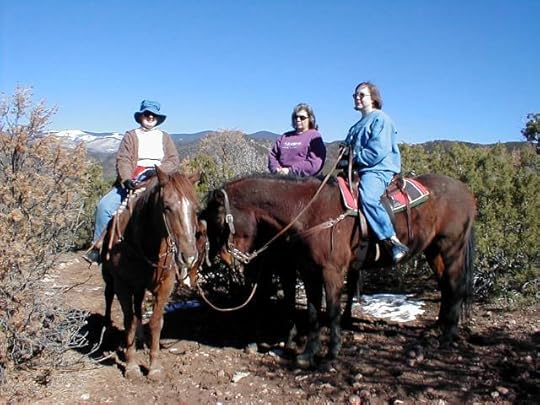
The other exception came from giving one of the characters in my Face Down Mysteries a love of horses. I fell down a rabbit hole researching horses and riding in the sixteenth century, and found a treasure trove of useful details in one particular book, Anthony Dent’s Horses in Shakespeare’s England. I now know a ridiculous amount of related trivia, including how long it would take to ride between various English towns. And I had the pleasure of vicariously owning and caring for a horse without the cost or the hard work. Win-win, right?

Kathy Lynn Emerson/Kaitlyn Dunnett has had sixty-four books traditionally published and has self published others. She won the Agatha Award and was an Anthony and Macavity finalist for best mystery nonfiction of 2008 for How to Write Killer Historical Mysteries and was an Agatha Award finalist in 2015 in the best mystery short story category. In 2023 she won the Lea Wait Award for “excellence and achievement” from the Maine Writers and Publishers Alliance. She was the Malice Domestic Guest of Honor in 2014. She is currently working on creating new editions of her backlist titles. Her website is www.KathyLynnEmerson.com.
November 14, 2025
Weekend Update: November 15-16, 2025
 Next week at Maine Crime Writers there will be posts by Kaitlyn Dunnett/Kathy Lynn Emerson (Monday), Kate Flora (Tuesday), Allison Keeton (Thursday), and Matt Cost (Friday), with a Writing Tip post on Wednesday.
Next week at Maine Crime Writers there will be posts by Kaitlyn Dunnett/Kathy Lynn Emerson (Monday), Kate Flora (Tuesday), Allison Keeton (Thursday), and Matt Cost (Friday), with a Writing Tip post on Wednesday.
In the news department, here’s what’s happening with some of us who blog regularly at Maine Crime Writers:
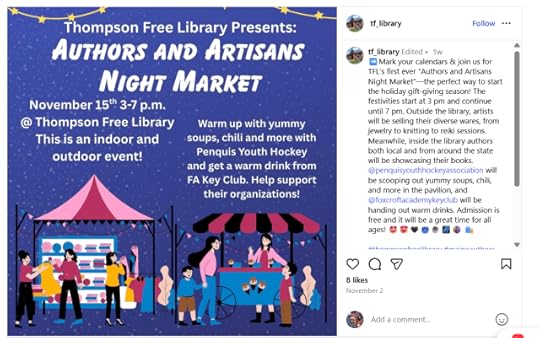
Maureen Milliken will join a variety of Maine authors and other vendors at Thompson Free Library’s Author and Artisan Night Market, 3-7 p.m. Saturday (today!). There’s no admission fee, thre ARE hot food and drinks, authors inside the library and lots of other vendors outside, 186 East Main St., Dover-Foxcroft. The event supports the library and Penquis Youth Hockey.
Maureen will also have a table at the Sidereal Farm Brewery’s Kindlesmarkt from 1 to 4 p.m., Saturday, Dec. 6, in the brewery’s beer garden, 37 Sidereal Way, Vassalboro. It’ll be held snow or shine! A variety of vendors, a bonfire, a special menu and hot drinks featuring Bierstacheln (beer caramelized with a hot poker) and cider. Get in your long johns and get in the holiday spirit with a fun afternoon of food, drink, and shopping.
An invitation to readers of this blog: Do you have news relating to Maine, Crime, or Writing? We’d love to hear from you. Just comment below to share.
And a reminder: If your library, school, or organization is looking for a speaker, we are often available to talk about the writing process, research, where we get our ideas, and other mysteries of the business, along with the very popular “Making a Mystery” with audience participation, and “Casting Call: How We Staff Our Mysteries.” We also do programs on Zoom. Contact Kate Flora
November 13, 2025
Who Doesn’t Love a Good Con, Author’s Edition
Rob Kelley here, sharing one of the weirder experiences of becoming a published author. As everyone knows (because I keep telling everyone, repeatedly), my debut novel Raven hit the streets at the end of October. Thanks to all of my fellow Maine Crime Writers for your support in that journey, as well as all of the fine participants at Crime Bake last weekend. So much fun!
With publication came another dubious honor: the almost daily receipt of author scam emails. I don’t know how common this is, but I’m sure I’ve exacerbated it by being very present on social media in the run-up to my book launch. To be fair, maybe not all of them are cons, but most of them definitely are.
They come in two flavors. First is the “marketing consultant” email, gushing with AI-generated enthusiasm for my book including details lifted from my back cover copy. The compliments are fulsome and the promises to generate sales through Amazon, Goodreads, and social media campaigns are impressive.  I only need to respond to an email like IMakeAuthorsRich@gmail.com. OK, so those are super obvious: no company name, no actual proposal, just a phishing expedition. (Which, by the way, is one of the many computer crimes I recently discussed on the Criminal Mischief series with thriller writer D.P. Lyle for Outliers University!)
I only need to respond to an email like IMakeAuthorsRich@gmail.com. OK, so those are super obvious: no company name, no actual proposal, just a phishing expedition. (Which, by the way, is one of the many computer crimes I recently discussed on the Criminal Mischief series with thriller writer D.P. Lyle for Outliers University!)
What’s kind of sad in all of this is that I think some of the proposals might be real. I’m fortunate to already have a marketing partner, but if I didn’t, I very well might be wasting time trying to figure out who might be legit!
The second flavor is the far more annoying one. In these, the sender promises to promote me in their book club, with hundreds of readers committed to buying and reading my book. I’m actively marketing to book clubs, so this would be awesome, were it real. And yeah, because I’m thinking about book clubs, I fell for this one. An email came in via the contact form on my website (I try not to advertise my direct author email, a decision I am really happy about now!). I responded that I was interested and we exchanged a few innocent emails about how awesome it would be before they dropped the fee schedule on me. I mean, it might be worth it to pay $300 to get a couple of hundred guaranteed purchases, but I knew that wasn’t what was going on here. When I searched for the book club there was no Facebook account or any other result, except one Meetup.com event scheduled with that name. That seemed potentially legitimate until I got the third and fourth “book club” offers from different people who also had only one Meetup.com event scheduled and no other internet presence.
Lesson learned, with no money out of my pocket, fortunately. Though, one of the scammers, obviously annoyed with my unwillingness to fall for their scam, made sure to tell me they dropped a review of the book on Goodreads. One star. Everybody’s a critic, apparently.
Next month I’ll be writing about the process of creating an audiobook version of Raven through Amazon’s ACX platform. The whole thing was a blast. The audiobook is now in the final stages of approval by ACX and should launch in the next week or so!
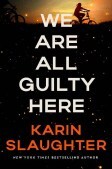 Currently reading: We Are All Guilty Here, Karin Slaughter, 2025
Currently reading: We Are All Guilty Here, Karin Slaughter, 2025
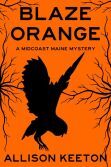 Next in my TBR list: Signed copy of fellow Crime Bake Debut Author and Maine Crime Writers blogger Allison Keeton’s Blaze Orange, 2025.
Next in my TBR list: Signed copy of fellow Crime Bake Debut Author and Maine Crime Writers blogger Allison Keeton’s Blaze Orange, 2025.
A Simple, Hard Truth and A Giveaway
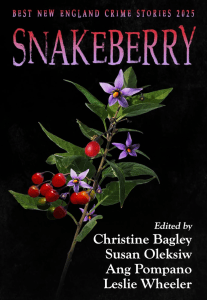 Snakeberry: The Best New England Crime Writing came out earlier this month and I’m going a giveaway to celebrate!
Snakeberry: The Best New England Crime Writing came out earlier this month and I’m going a giveaway to celebrate!
Snakeberry is a great anthology, a labor of love, put out every year in celebration of New England crime writing. This year’s edition has some great Maine representation: Bruce Robert Coffin, Brenda Buchanan, Mo Moeller, and me.
If you write crime stories, be sure to submit next round. Submissions usually open in January.
The collection never disappoints and this year is no exception. To celebrate, I’m going to share my story that was included in the 2023 collection: Wolfsbane.
Read the story and let me know what you think. One lucky commenter will be selected to win a copy of this year’s collection so check back in tomorrow morning to see who it is. And if you don’t get selected, you can purchase a copy HERE. As Dick Cass always says, “Books make great gifts.”
“A Simple, Hard Truth”
By Gabriela Stiteler
Originally Published in Wolfsbane: Best New England Crime Stories (2023)
You get thirty-six years into teaching and you think you know it all.
And then something happens to disrupt the equilibrium.
For example, fifteen years or so ago I had this kid, a smart kid even though I’m not supposed to say that. She was the sort of kid who, when reading Hamlet, called Queen Gertrude “Trudie.”
She made a compelling case that maybe Trudie knew about the poison. That she, like Ophelia, was trapped and poison was the way out. In our unit on Steinbeck, we talked a lot about loneliness and friendship and the way a person can corrode. She had been offended that Curley’s Wife, who was a not a good person, didn’t have a name. She said it was manipulative. She said, “No wonder she corroded.”
I tried to point out that’s what most writing is. Manipulation. A way for us to justify things to ourselves and each other. Things we don’t really understand.
I still think about that kid from time to time.
And again, five years ago I had one kid I didn’t like. Part of me feels bad saying it because I’m not supposed to dislike any of the kids I teach. But he called a girl one of the worst things you can call a girl when she offered up an opinion different from his. And he sprinkled racial slurs into conversations like salt.
He had his reasons.
Abusive dad. Absent mother. And, you know, society. We condition our boys to bottle everything up and then we shake and shake and shake and wait to see what happens.
At the end of the year, he said I was the best teacher he ever had. A statement that kept me up at night. That kid is off in the world now and I try not to think too much about what sort of damage he might be doing.
Then again, he might have turned out just fine.
This past March, I experienced another disruption.
In my third block, the one right after lunch, the kids were preparing for their capstone project, an essay about a life lesson learned. It’s one of those tasks they have to finish in order to get that slip of paper that allows them to walk across the stage and enter the great beyond. In my thirty-six years, I’m proud to say, never once has a kid not earned this credit for my course.
Not even that kid I didn’t like.
Anyway, third block was quiet until Amy, who usually kept to herself, shook things up. She asked, and I still remember because I wrote it down, “Can a life be made less valuable if a person does wrong? Can everything really be forgiven?” It wasn’t where I’d imagined things going, but sometimes it’s worth it to let the train go off the rails. I posed the question to the class and sat back and listened and thought to myself that these kids might just be alright.
But the next day Amy, who asked that question and set us off down a discussion with no clear answer, disappeared from school. Now there are some kids that drop in early spring when they realize they’ve sunk themselves too deep in missing work and low grades. When they realize the year is past the point of salvaging. But not this kid. Until that question in class, she had struck me as the sort that is afraid to breath too loudly, afraid of taking up too much space.
Besides, all her graduation requirements were stacked neatly, waiting. I know because I checked. She was down to a handful of hoops, easy hoops. All she had to do was jump.
Why then, had she disappeared?
I gave it a week before I started asking around. There were two students in particular who could be depended on to be in the know: Jackie Sullivan with a pixie cut and sullen expression and Lauren Reed with pink hair and three nose rings. All it took was two donuts from Tony’s and an invitation to stay after school.
They spilled right away.
“Believe me,” Lauren said, ignoring the donuts. “Amy has her reasons for not coming.”
Jackie nodded and selected a jelly-filled number dusted with powdered sugar.
“Her mom’s sick,” Lauren went on, shooting a quick side-look to the door and lowering her voice. “You know. Real sick. And she’s got her little sisters…”
The way she said it, stretching out the word sick, I picked up quick. Amy’s mom was the sort of sick that looks half-dead and pops pills. The kind of sick that can kill a person. The sort of sick that hit my community hard and showed no signs of relenting.
Lauren watched me with a shrewd expression, making sure the information took root.
“You know?” She repeated.
I nodded.
“It’s too bad about her dad,” Jackie said. She’d taken one delicate bite of the donut and had placed it on a napkin at the center of the desk.
“Stepdad,” Lauren corrected. “Nice guy. He tried to bring them to church sometimes. The Catholic one.”
“Saint Margaret’s,” Jackie murmured, continuing that nod.
Another stretch of silence. The stepfather I knew. A stocky man with meaty hands and dimples. He dropped the kids off and was the one who came for conferences.
A good man, by all accounts.
“He helped us with some plumbing,” Jackie said. “My dad was shocked when he found out.”
What happened to the stepdad was no secret. During the last days of winter, what was left of his body was found in the woods with a hole from a shotgun in his chest, his face picked apart by animals. I’d never touched a gun in my life, but I imagined that shotgun wound to be especially gruesome. The police had looked into it and ended up writing it off as one of those tragic accidents. The man was dressed in dark brown and they figured he was clipped by a hunter.
Amy had shown for school the day after the gruesome discovery, stoic as hell.
Lauren was examining her chipped blue nail polish. “So Amy and her sisters are left with their mom.”
A mom who, according to these two, was slowly dying from those little pills she couldn’t stop taking. Addiction being an illness that can corrode.
Which explained a lot. We live in a small community in central Maine that is slowly dying out. At our center is a half-empty historic downtown surrounded by farmland and crisscrossed by the interstate and a muddy river. We’re bound together by all of the stories we know about a person. By the way we’ve seen similar paths worn down over time. And Amy’s path was clear. Without her stepdad, she would have to stay home and work maybe at the gas station or maybe at the bank.
If she didn’t, her sisters would be taken in by the state.
It was a simple, hard truth.
I made small talk with Lauren and Jackie until they ran out of things to say. At the end of the day, they were good kids. Hardworking and mostly kind. They’d be alright. But that’s what I told myself about most of them. It’s the only way a teacher can sleep at night.
As I watched them make their way down the hallway towards the doors, I couldn’t stop thinking about Amy.
I understood that survival was the most basic of human needs and trumped graduation requirements. But I still believed that a degree, that a piece of paper, might set a person on a different path. Besides, it was my calling, getting kids to tell their stories. Holding space for them to be heard.
It was that misguided optimism that had me showing up at Amy’s address one Saturday morning in early spring when the crocuses were starting to pop, golf ball sized bursts of purple and white. Her trailer was a robin’s egg blue and overlooked the on ramp to 95 going north. The yard was half marsh and half brown patchy grass. The driveway was all mud and the roof was covered in a thin coat of moss.
Before I got out of my car, I popped a Tums from the bottle I kept in my glove compartment. My stomach was churning from too much coffee and not much of anything else.
Dan, who had died six years ago from the sort of cancer that eats a person from the inside, had been big on breakfast. Pancakes on Saturdays with syrup he tapped from woods that ran behind our house or a blueberry compote from the raised bed he tended with the care of a devoted retiree. A raised bed that had grown feral in the time that passed between then and now.
My doctor had been telling me to cut back but old habits were hard to kick.
The mom, who might have been named Donna, was sitting on a rusted metal glider with a pressed glass ashtray on her knee. She was wearing a faded yellow terry cloth bathrobe and a menthol cigarette was hanging out of her mouth.
“Morning,” I said, waving.
She blinked at me a few times before nodding.
“Amy here?” I asked in my friendliest voice.
She continued to stare at me as she took a long drag of the cigarette. In that bright morning light, she was almost beautiful, faded and soft at the edges like the petals of a daffodil.
“I’m Mrs. Murphy. Her English teacher.”
She took another drag. “I know who you are. What do you want?”
She swallowed her rs, like true Mainers do and eyed me with red-rimmed, tired eyes filled with distrust.
I shoved my hands into my pocket and pulled out the folded paper I’d brought. “I wanted to give Amy her last assignment. The one that’ll get her the credit for the class.” I unfolded the paper and held it out to her. She stared at it and it trembled in a slight breeze.
After a minute, I pulled it back.
“Look,” I tried again. “She’s a good kid and I wanted to see how she’s doing.”
The woman’s eyes narrowed slightly but that answer seemed more palatable. “If you ask her, she says fine. I don’t think she is. Christ knows I wish she would cry sometimes. Didn’t do it after they found his body. And she’s not doing it now. Just stands there and takes it all in.”
I didn’t move, waiting. What for, I don’t know.
She went on, in what sounded like a rehearsed litany, “Even as a baby she didn’t cry. Not when she was hungry. Not when she was tired.” She took another long drag, still staring at me. “I told her to go back to school. I told her to finish. I never did and look where it got me. That’s what I said to her. But she won’t.”
She laughed then, unexpectedly. It had a brittle, fragile quality, her laughter. She stopped abruptly, her eyes flicking to some point beyond my shoulder.
“I’m here,” Amy said. She was standing at the door on the side porch, clutching a paper towel, staring at her mother, expressionless. She was small with dark hair and pale skin. She was the sort of kid who was good at slipping through the cracks.
I cleared my throat and forced a smile. “Hi, Amy.”
Her brow furrowed for a second, the way it did when she was deciding between two options. I’d seen it enough in class. Which essay topic. Whether or not to raise her hand. If she wanted to take half of my sandwich that day she came in during lunch. In the end she did, eating the thing in silence. Not meeting my eye.
Teachers, the good ones, know to read nonverbal cues like stage directions. What kids don’t say can be just as revealing as what comes out of their mouths.
And Amy, standing there on that porch with the filtered sunlight from a tall, untrimmed elm, had a look of resignation to her that just about broke my heart.
“Come inside,” she finally said before turning and letting the screen door swing shut.
Her mom went right to staring at the highway ramp. I was already forgotten.
Out back, a small shed was rotted away at the bottom and padlocked shut and the stepdad’s truck with a hitch and a flat sat next to it, surrounded in about an inch of water.
I tried to remember the last time it rained.
I followed up the sagging porch was sinking into the marshy lawn, the steps held up but cinder blocks that were half-sunk. Inside, the galley kitchen was spotless but tired, with peeled linoleum floors and cabinet doors that hung crooked. It smelled like bleach and coffee.
I stood on the rug near the door, worried about leaving muddy traces. The water had soaked through to my socks. “I came because…” I began.
“I know,” she interrupted, gesturing to an open window surrounded by busted vinyl blinds. “Can I get you some coffee?”
Christ, and my doctor, knew I didn’t need coffee. My stomach was rebelling against chalky tablets I’d swallowed. But I nodded.
She turned on the electric stove, the coiled burner turning red, before placing a kettle on it. She took two chipped mugs from a shelf, scooped three tablespoons of generic instant coffee into each mug, slid the powdered creamer over, and then turned to stare at me, waiting for the water to boil.
I unfolded the paper again and put it on the counter next to her, pressing down the little creases.
“It’s our last essay,” I said. “I want to hear what you have to say.”
It wasn’t the way I planned to pitch it. I think until the moment I saw her on the porch I really believed I’d get her back in the classroom. That I’d get her to walk across the stage. But looking at her, I knew I was too late for any of that.
She stared at me, chewing on her bottom lip. Not speaking.
The kettle whistled and she poured the water over the grounds and stirred. Three times to the left. Three times to the right. She sprinkled creamer in her cup and stirred again.
“Do you really?” She asked, sounding almost angry.
“I do,” I said. My voice scratched and I felt suddenly and unexpectedly vulnerable. I couldn’t say why this paper felt so crucial. But it was apparent that it was. Call it a teacher’s intuition. Sometimes I could see things kids needed, things they didn’t know. And right then, I could tell she needed to write that essay.
Not that I could put any of it into words.
She lifted her mug and leaned against the wall behind her.
I forced myself to take a sip of the coffee she made, swallowing a bitter mouthful. I could make out the sound of the television down the hall and two little voices. There was a box of cereal on the counter and two bowls and two spoons. Waiting to be filled.
She stared at the paper and nodded slowly. “I’ll get it to you.”
I put the cup back on the counter and smiled.
She nodded again and I took it as a dismissal and left, not entirely sure how I felt.
Two weeks later, the school was mostly empty when I arrived and I made my copies and got a cup of coffee I knew I shouldn’t drink. I said hello to Dennis, a math teacher, a man I’d known for twenty-six years who was wearing a bowtie, like he always did. And I waved at Joe, who was armed with a spray bottle of Krud Kutter and doing the rounds to make sure the bathrooms had been cleaned. He was vigilant about graffiti.
I cracked my classroom windows and looked out over the football fields. My classroom was prime real estate. Thirty-six years will get you that much. The morning sky was gray and rainy and it smelled like wet earth. I left the fluorescent lights off.
I wrote the date on the whiteboard and started wiping my desks down with cleaner. Usually I spent my mornings thinking through my lessons, through the laundry list of kids I want to check in with, through any loose ends from the day before. I heard Amy coming before I saw her. The squeak of wet sneakers on linoleum. The tentative knock at the door. I don’t know how, but I knew it was her.
“Come in,” I said.
She came in, her dark hair damp and pulled back into a tight ponytail. She was wearing a red polo tucked into wrinkled black pants, her nametag askew gripping a folder.
I smiled. “Good morning,” I said and gestured for her to sit down.
She came and sat and she placed the folder on my desk and stared at it.
“Have you eaten yet?” I asked. They never ate breakfast, these kids.
She shook her head.
I opened the top left drawer and took out an orange and a granola bar and a small plastic bottle of water. I placed each in front of Amy in a tidy row.
“How are your sisters?” I asked.
The fat in the cream I’d put in my coffee was beginning to harden at the top, like a delicate sheet of ice. I forced myself to take a sip and waited. I understood kids in the morning. I knew how to hold silences, to create space for whatever they needed to say, to not say.
“Managing,” Amy said, never taking her eyes from the folder.
“And your mother?” I asked, though I wasn’t really interested.
She shrugged, a quick jerk of the shoulders. “Look, I’ve got to go to work. I did that essay. You wanted to hear what I had to say.” She pushed the folder towards me. “Go ahead,” she said. “Read it.”
The way she said it, was forceful and unexpected. It almost sounded like a challenge.
By this point, the smell of the coffee had crawled into my nostrils and I felt like I might be sick. My palms were damp from sweat and too much caffeine. Very few students liked to watch while I read something they’d written. “Now?”
She nodded and I put the cup down and carefully opened the folder, taking a neatly typed paper out. Four pages double-spaced. About two thousand words. No title. No name. No date.
I slid my glasses on and gave myself a minute to adjust. And then, I leaned back and read, swallowing the lump in my throat. The lump that wouldn’t go away. I’m sure my hands were shaking by the end of it. One or two words had been misspelled and my eyes traced back to them, in need of a distraction, in need of more time. When I looked up, Amy was staring at me. Waiting. And that clock behind her head, was like a metronome.
“Is that what you wanted to hear?” She asked after a minute.
I took off my glasses and rubbed my eyes, thinking. What to say. What not to say.
“The man, the one who died at the end,” I twisted my clumsy tongue around the words. “…He was not a good man.”
She said nothing.
I stumbled on, “What I mean to say is I was glad of the ending. I was glad he died.”
She fixed her eyes on my face, as if to make sure I understood. Really understood what she was saying.
“Look,” I tried again, “I understand why the girl did what she did.” I went on, flailing. “It makes me think about that conversation in class. About the questions you were asking about the value of a life. About goodness and badness.”
Amy was still staring at me, still as the granite breakwaters that jutted out into the ocean, trying to protect what they could against those relentless, beating waves.
I straightened the folder and glanced at the clock.
The hall lights turned on and I could hear kids arriving.
I slid the paper towards her and closed the folder. “And how are your sisters doing?” I asked again.
“They’ll survive.”
“And you, Amy? How are you doing?” I asked at last.
“I’m fine.” She said it like she was trying to convince herself of its truth. “Just fine.”
I wanted to say more but didn’t.
The morning bell rang and with it, voices and lockers and shoes echoed down the hallway.
“So you understand?” Amy asked. She might have been asking for absolution, for forgiveness, for a moment of compassion.
I stared at the folder and then at Amy and thought about that endless series of tomorrows that stretched out before her. I thought about my own life, too. Had I ever been so young and so desperate and so brave?
“I do,” I said and maybe I lied.
Amy nodded again and took the water and the granola bar, tucked them into her bag along with the essay she’d written. And she slipped out of the room, down the hallway, and into the world.
I sat at my desk staring at the coffee I knew I wouldn’t finish and the empty folder and the orange. My students began coming into the room. Some laughing. Some quiet.
END
Remember – Leave a comment about the story and check back in the comments tomorrow morning for the lucky winner.
November 12, 2025
Writing Tip Wednesday: It’s All About Theme
Writing Tip Wednesday: It’s All About Theme
Hello and happy Writing Tip Wednesday!
I’m fresh off Crime Bake 2025 — and I’ll wax poetic about that tomorrow. But for today, I want to talk about theme.
On Saturday, I moderated “What It Means: Choosing a Theme” with Lori Rader-Day, Edwin Hill, and Carolyn Wilkins. Their bios and links are at the end of this post, but this one’s dedicated to that conversation.
What is a theme, anyway?When I used to teach 8th grade, I once fell flat on my face with a lesson.
I wrote the daily question on the board:
“What is a theme?”
Crickets.
I was frustrated because I knew my students were into the book. I knew they had things to say. My coach looked at the question and said, “That’s boring. What if you asked, Which is more powerful: hope or despair? Why? Do you think the author agrees with you?”
Game changer.
That day, I learned two things:
Good questions matter.
Themes live in the universal questions we can’t stop asking.
Writing is about expression — but it’s also about connection. Reading, then, is a conversation between writer and reader about what it means to be human.
When I taught, my students would read Paul Laurence Dunbar’s “We Wear the Mask.” I wouldn’t tell them who wrote it. We’d just read the poem and discuss what it mean to them.
And they got it. Nobody wears a mask better than a middle schooler trying to figure out who they are, how others see them, and where they fit.
Then I’d share Dunbar’s biography — a late-19th-century Black writer, the son of formerly enslaved parents — and we’d read it again.
“Oh,” they’d say. “Wow.”
Then we’d listen to Maya Angelou’s “The Mask.” Same conversation, but deeper now — about identity, performance, and survival.
That’s what theme is: both deeply personal and deeply universal. The thread that makes us who we are and binds us to others. Literature is uniquely human because it’s always about the individual and the collective.
Where themes really come fromDuring the panel, Lori, Edwin, and Carolyn all agreed: You don’t start a story thinking, This is my message.
As Carolyn said, “We write mysteries, not manifestos.”
Lori added that her stories often orbit around powerful men behaving badly.
Carolyn’s focus: characters who struggle and overcome.
Stories, Edwin said, come from an idea, a character, a person, a moment, a snapshot in time.
“A girl on stage, the shadow from the spotlight stretching behind her,” Lori added.
Writers start with curiosity — not answers. The themes emerge after the story is told. Sometimes, as Edwin shared, a reader articulates a theme better than the writer ever could. “Yes,” he said, “that’s exactly what I meant.”
When you’re stuck on what you’re “saying”If you’ve ever hit that wall — What am I even trying to say here? — you’re not alone.
I hit it constantly. Always around 25,000 words.
Carolyn and Alison McMahan once told me, “That’s the end of the first act.”
Of course it was.
Lori said the same thing happens to her — especially when her sleuth is an amateur. (“Why wouldn’t she just call the police and go home?”)
Here are a few tricks that came up during our panel:
Drop an XXX instead of Googling. Research can wait. It isn’t worth interrupting the flow to add the tempting details that will take you down rabbit holes.
Skip the stuck scene. Write a placeholder: [Something big happens here.] You’ll fill it in later.
Embrace the ugly draft. Lori calls her first drafts a “massacre.” Edwin calls it “culling.” I call it necessary. Get it done. Fix it later.
The heart of itDuring the Maine Literary Awards this year, Morgan Talty said, “It isn’t about the questions we’re answering as writers — it’s about the questions we’re asking.”
Writing and reading are conversations — about who we are, how we see the world, and what it means to be human. The themes that emerge are the threads that bind us together.
Back to when I was teaching, we’d read Shakespeare’s “Sonnet 18.” My student Chloe said, “It’s not about her. It’s about him — his writing. His words giving her immortality.” There was a pause, then she added, “That’s pretty dope.”
And I think I agree.
Lori Rader‑Day
Lori is an Edgar®-nominated and Agatha, Anthony, & Mary Higgins Clark award-winning crime fiction author. Her novels include The Death of Us, The Lucky One, Under a Dark Sky, and Little Pretty Things. She lives in Chicago, teaches creative writing for the MFA program at Northwestern University’s School of Professional Studies, co-chairs the Midwest Mystery Conference, and served as national president of Sisters in Crime in 2019-20. Lori Rader-Day
Edwin Hill
Edwin is a crime and suspense novelist known for his Hester Thursby series (Little Comfort, The Missing Ones, Watch Her) as well as stand-alone thrillers The Secrets We Share and Who to Believe. He’s been nominated for Edgar and Agatha Awards, and holds a background in academic publishing and teaching. He lives in Roslindale, Massachusetts with his partner Michael and their dog Edith Ann. EDWIN HILL
Carolyn Wilkins
Carolyn is a professor at the Ensemble Department of Berklee College of Music, an accomplished jazz pianist, composer, and vocalist who toured as a U.S. Jazz Ambassador. She is also a multifaceted entrepreneur working at the intersection of spirituality and creativity and a psychic medium, Reiki sound healer, and the author of six books. Including her latest Murder at the Wham Bam Club. Carolyn Wilkins.
November 11, 2025
Yoga & Writing

I just finished a grueling ninety minutes of hot yoga. After a relaxing shower, I feel much better about writing this blog post. My mind and body is relaxed and calm, and I feel like I did something good for myself. Those tangled plot lines and subplots now feel clearer to me now that I’ve disciplined myself and cleared my mind of all worldly things.
What methods do you use to help clear your mind and prepare for writing?
I’ve found that hot yoga is the perfect exercise to help me get back into my story. The room is heated to about 106 degrees, increasing the difficulty of the exercise. Concentrating on my breathing g helps keep me in the moment and focused on the task at hand. During these poses, my mind is not wandering about or thinking about other things, but clearly on technique. One pose flows naturally to the next, and the instructor walks around the room helping each and every participant to do their best. This is the best time to let everything go and be totally present in the moment.
The poses are difficult, at times nearly impossible. Many of the others in the room are much better at than I am and way more flexible.There are all different age groups in the room, but I make it a point not to compare myself to them. It’s sort of like writing; comparing your own prose to someone else’s is always a bad idea. But the goal in hot yoga is to proceed at your own pace and make incremental progress with each visit. Healthy body and healthy mind go hand in hand. The discipline is the same one uses when writing. Practicing yoga and the practice of writing go hand in hand,
I love the intense, moist heat. It warms up all the muscles and helps you sweat out all the toxins in the body. The mind goes into survival mode as you transition into the next pose. Sweat drips from every part of your body as your muscles stretch to their limit. During the ninety minutes, we will perform twenty-six poses in perfect stillness. Later, feeling refreshed and energized, all y creatively thoughts will flow more freely into my mind.
I stopped going to hot yoga years ago but just recently returned, and I can’t tell you how much it has helped my mental clarity. It’s one of the few activities where I can clear my mind of all the monkey chatter and self-doubt. Even exercising, walking, lifting weight or using the elliptical machine, I can never totally stop thinking. But after doing yoga, I am eager to get back to the keyboard, my mind fresh and ready to get back to the task of writing. Let’s face it, writing can be bad for our bodies. We sit for hours at a time, drinking coffee, our postures poor. Yoga he,ps me get everything back in alignment.
If you have any other ideas that help you achieve mental clarity, please let me know.
Have a great Thanksgiving!
Joe

November 10, 2025
Crime Bake Photos!
I could not resist the temptation to put up this quick Monday night post with some photos of MCW bloggers at Crime Bake last weekend.
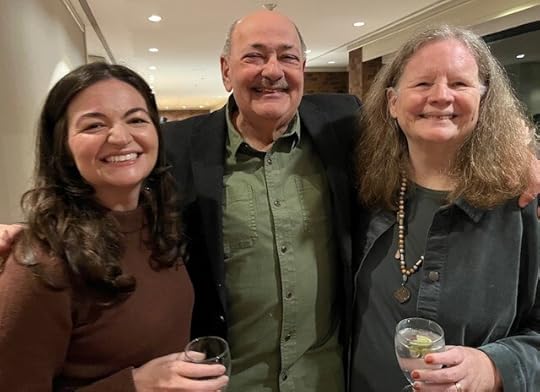
Lifetime Achievement honoree (and MCW blog emerita) Barbara Ross at right with her husband Bill and daughter Kate.
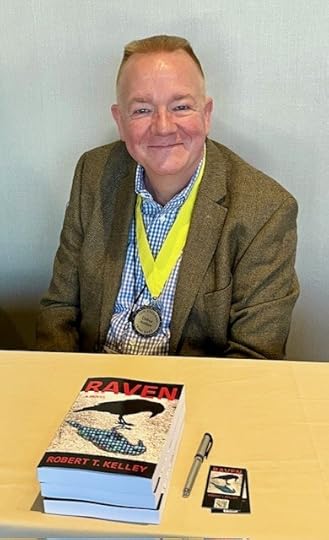
Rob Kelley at the book signing table with his just-released novel, RAVEN. The medal on the yellow ribbon is the badge of accomplishment given to each year’s debut authors.
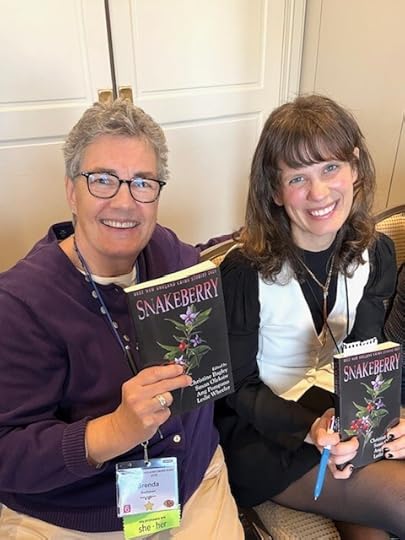
Gabi Stiteler, co-chair of Crime Bake, writes brilliant, gritty short stories. Here we are holding up copies of SNAKEBERRY: BEST NEW ENGLAND CRIME STORIES 2025, which includes her story, MONEY WELL SPENT and mine, CAPE JEWELL.

Me and my pal Dick Cass.

That’s Lori Rader-Day, the 2025 Guest of Honor, with Diane and me at the country-midwestern (Lori’s from Chicago) themed dinner. Lori’s soon to be released novel, WRECK YOUR HEART, is about a country singer tangled up in a mystery.
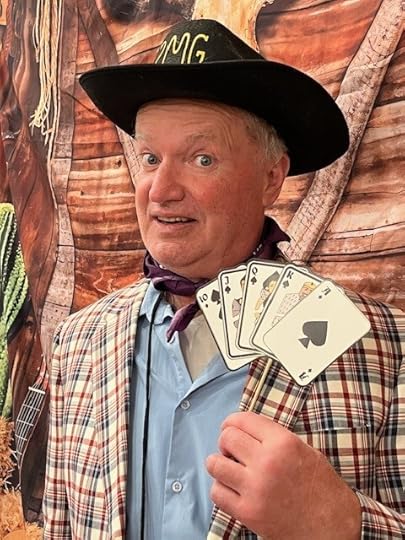
Matt Cost shows his hand.
As you probably can tell from the photos, a great time was had by all.
November 9, 2025
They, Them, Ze, Zir and You Guys
Blog Nov 2025. Jule Selbo
INFO on FREE BOOKS at the end of the BLOG, you guys!

Hey, you guys. This is a relatively ‘old’ scholarly reflection (the topic became kind of big in the early 2000s), but I still find it interesting to ponder when I trip over it…
Do you guys remember a NY TIMES article by Audrey Bilger, the president of Reed College? She put this debate on the map in 2002 and ended her opinion with an influential WE MUST STOP THIS!!!

She called out against using ‘you guys’ as a term of address for women, writing that calling women ‘guys’ makes femaleness invisible. I paraphrase her opinion a bit: ‘Oprah says it. The cast of Friends say it, my yoga instructor says it, as do my students. But is it a good thing? Should we use ‘you guys’ to refer to a mixed gender group or as a term to refer to a group of women?
Why, Audrey Bilger asks, if one guy is clearly ‘male’ and two or more guys are male, why/how does the plural become, for the most part, gender neutral?
What do you prefer? What is preferable when referring to a group or duo of mixed gender?
What are you guys doing over the weekend?What are you all doing over the weekend?What are you folks doing over the weekend?What are you people doing over the weekend?What are you two (three, four or twelve or…) doing over the weekend?Why do we care? Do we?
A linguist named Steven Clancy noted (around 2001) that ‘male’ terminology such as ‘you guys’ has a tendency to catch on, whereas ‘female’ terminology doesn’t. It’s acceptable for us to refer to a group of women as ‘you guys’ but we don’t refer to a group of men as ‘you gals’ (unless it’s a joke or derogatory).
American television has made the use of ‘guys’ to include two or more in all genders acceptable and of normal usage is many foreign countries. Most people around the world now accept it as gender neutral.
And, you guys, as we all know, gender itself is a bit of a hot topic. Referring to gender, we can get dinged, we want to get it right. How we use it, report it, live it —is a hot topic.
A linguist prof in Britain (Emma Moore) wrote that it was from the 18th century onwards that people started using male pronouns when describing someone of a non-specific gender in writing and this marked the time when opinions on what pronouns should be used started to change. The prof explained: “You might have a sentence like ‘if a student comes to see the teacher, he must bring his homework’, where he is supposed to refer generically to males and females…However, there are lots of psychological studies that show when people hear that generically, they don’t hear it as gender neutral – they do just think about men.”
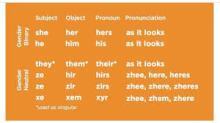
Remember the use of ze/zir? They were neopronouns to be used for he/him and she/her. Ze as the subject and zir as an object or a possessive. Zeself and Zirself were to be used as reflexive. I have yet to see this in the crime mystery books I read. Has anyone?
So you guys, as we know, the word ‘they’ seems to be doing a lot of heavy work now.
We writers (some of us) spend time (perhaps too much time) thinking about what words we want to use to make our craft/art accessible, clear, and enjoyable. Who has tried to write using only ‘they’, ‘their’ and ‘them’. What problems were encountered?
AI search states: The American Dialect Society named the singular “they” the word of the year in 2015 and again in 2019.
So, I guess someone cares. (I didn’t even know there was such a thing as A WORD OF THE YEAR.)
Dictionaries note the prominent role of ‘they’ in modern language. AI Overview states: The use of ‘they’ as a singular, gender-neutral pronoun has not (as some expected) gone out of style; it has become widely accepted in modern English for both generic and personal use. It’s formally accepted as a standard pronoun for referring to individuals whose gender is unknown, irrelevant, or non-binary.
Well, you guys, it is sort of nice (IMO) to be able to use ‘they’ or ‘their’ for singular reference. “The winner can come collect their prize.” I tend to find it the awkward to use the ‘his or her’ or “his or her or their” prize. It gets harder (IMO) in crime mystery genre if we write: ‘They will arrive at the prison, to serve their time for murder…’ when we need to make it clear it is ONE person. So as an example, some of us will revert to using NAMES of characters and avoid (or drop) possessive pronouns: Bill will arrive at prison, to serve time for the murder…
I am wondering: what publications are using this wordage: Ze arrived at prison, walked by zeself past zir and smiled.
I would expect there are publications with ze and zir are out there but they have never crossed my path.

I have screenwriting students who twist their minds into shredded biscuits trying to make their work clear – after all screenplays are considered ‘blueprints’ for production— thus costumers, make-up departments, casting departments et al are doing quick reads to set out the basic needs for a production. The ‘they’ pronoun doesn’t give them quick reference. I point it out once to my students (understanding it is a bias I have) and then let them choose their own pronouns. The Hollywood industry gives this advice: Prioritize clarity: If using “they” for a character, make sure the context is clear to avoid confusing the reader. For example, instead of writing “They enter,” write “Hazel enters” … “They drink the potion and collapse” write “Jim drinks….” even if it’s been established that Jim is the only person in the room… (then no one has to go back and re-read to get the information.
In the crime mystery genre, getting a review that a book is a page-turner or a fast-read is usually considered a good thing. Does using ‘they’ or ‘them’ to refer to singular entities or ‘the guys’ or ‘you guys’ harm that ability to ‘fast-read’? Because our brains aren’t used to it? Or because we tend to use genders of our antagonists/protagonists/supporting characters in such a way to make some kind of point or to initiate more conflict?

But, you guys (back to the ‘you guys’ article I happened on that got me thinking about this again) – the reading that started this train of thought: The novelist Alice Walker (The Color Purple, Meridien and more) was also interested in ‘you guys’ usage. She said use of the term to refer to women reflected a “fear of being feminine.” Give this a watch if you have time… it’s short:
https://www.youtube.com/watch?v=yqvHXYcN0xc
Audrey Bilger, the universal linguist and literature professor (as reported before, also President of Reed College in Oregon) that I enjoy reading – after she wrestled with the idea of shrugging off the importance of the use of ‘you guys’ as referral to any gender in a group, came to agree with Alice Walker. But Alice also wrote, at the end of one of her (their, zir) essays: “From my observation of the speech patterns of girls and young women — including my daughters and students — I think ‘you guys’ is a horse too far out of the barn to be roped back in.”
Yes? No? Who cares?
Would love to hear – and all who comment are eligible for free crime mysteries!
Best to you all – Jule
November 7, 2025
Weekend Update: November 8-9, 2025
 Next week at Maine Crime Writers there will be posts by Juli Selbo (Monday), Joe Souza (Tuesday), Gabi Stiteler (Thursday), and Rob Kelley (Friday), with a Writing Tip post on Wednesday.
Next week at Maine Crime Writers there will be posts by Juli Selbo (Monday), Joe Souza (Tuesday), Gabi Stiteler (Thursday), and Rob Kelley (Friday), with a Writing Tip post on Wednesday.
In the news department, here’s what’s happening with some of us who blog regularly at Maine Crime Writers:
On Thursday, November 13th, Matt Cost will be giving a COST TALK with a focus on Glow Trap and The Not So Merry Adventures of Max Creed at the Scarborough Public Library in Scarborough, Maine, at high NOON. More Info Here.
The winner of October’s bundle of books is: Ann Hough. Please send your snail mail info to writingaboutcrime@gmail.com.
Don’t miss our newest offering: Writing Tip Wednesdays.
And a reminder: Someone who leaves a comment on one of our posts this month will win a bundle of cozy mysteries. Comfortable reading for the long, cold winter. Comments let us know you are out there and interested. We appreciate them.
An invitation to readers of this blog: Do you have news relating to Maine, Crime, or Writing? We’d love to hear from you. Just comment below to share.
And a reminder: If your library, school, or organization is looking for a speaker, we are often available to talk about the writing process, research, where we get our ideas, and other mysteries of the business, along with the very popular “Making a Mystery” with audience participation, and “Casting Call: How We Staff Our Mysteries.” We also do programs on Zoom. Contact Kate Flora
Lea Wait's Blog
- Lea Wait's profile
- 507 followers



